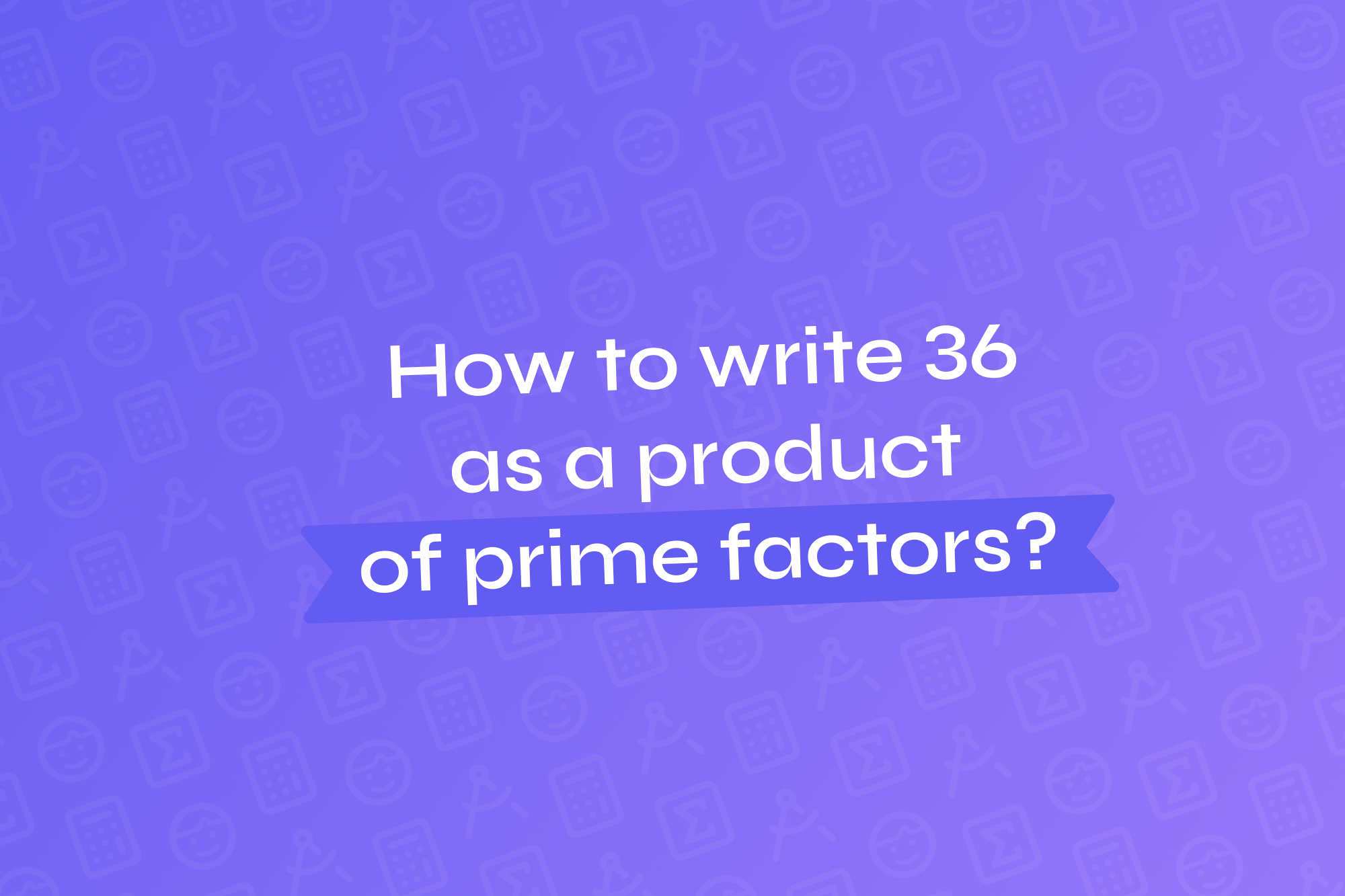
How to write 36 as a product of prime factors
Prime factorisation is a method of expressing a number as the product of its prime factors. In this post, we’ll break down the steps needed to write the number 36 as a product of its prime factors.
What are prime factors?
Prime factors are the prime numbers that multiply together to give the original number. Prime numbers are numbers greater than 1 that have no divisors other than 1 and themselves, such as 2, 3, 5, 7, 11, and so on.
A step-by-step process for finding prime factors of 36
-
Start with the number 36:
Begin with the number you want to factorise, in this case, 36.
-
Divide by the smallest prime number:
The smallest prime number is 2. Since 36 is divisible by 2 (36 is even), divide:
-
Continue dividing by 2:
Repeat the process with the quotient (18). Since 18 is also divisible by 2:
-
Move to the next smallest prime:
Now, 9 is not divisible by 2, so move to the next smallest prime number, which is 3. Since 9 is divisible by 3:
-
Divide again by 3:
-
Finally, divide the result (3) by 3:
Once you reach 1, the factorisation process is complete.
Prime factorisation of 36
So, the prime factorisation of 36 is:
This can also be written as:
Why prime factorisation is useful
Prime factorisation is a valuable tool in mathematics. It’s useful for simplifying fractions, finding the greatest common divisor (GCD), and working with least common multiples (LCM). It also helps in solving problems involving divisibility and number theory.
Conclusion
To write 36 as a product of prime factors, divide by the smallest prime numbers until you reach 1. The prime factorisation of 36 is , a simple yet powerful result showcasing prime numbers' importance in mathematics.